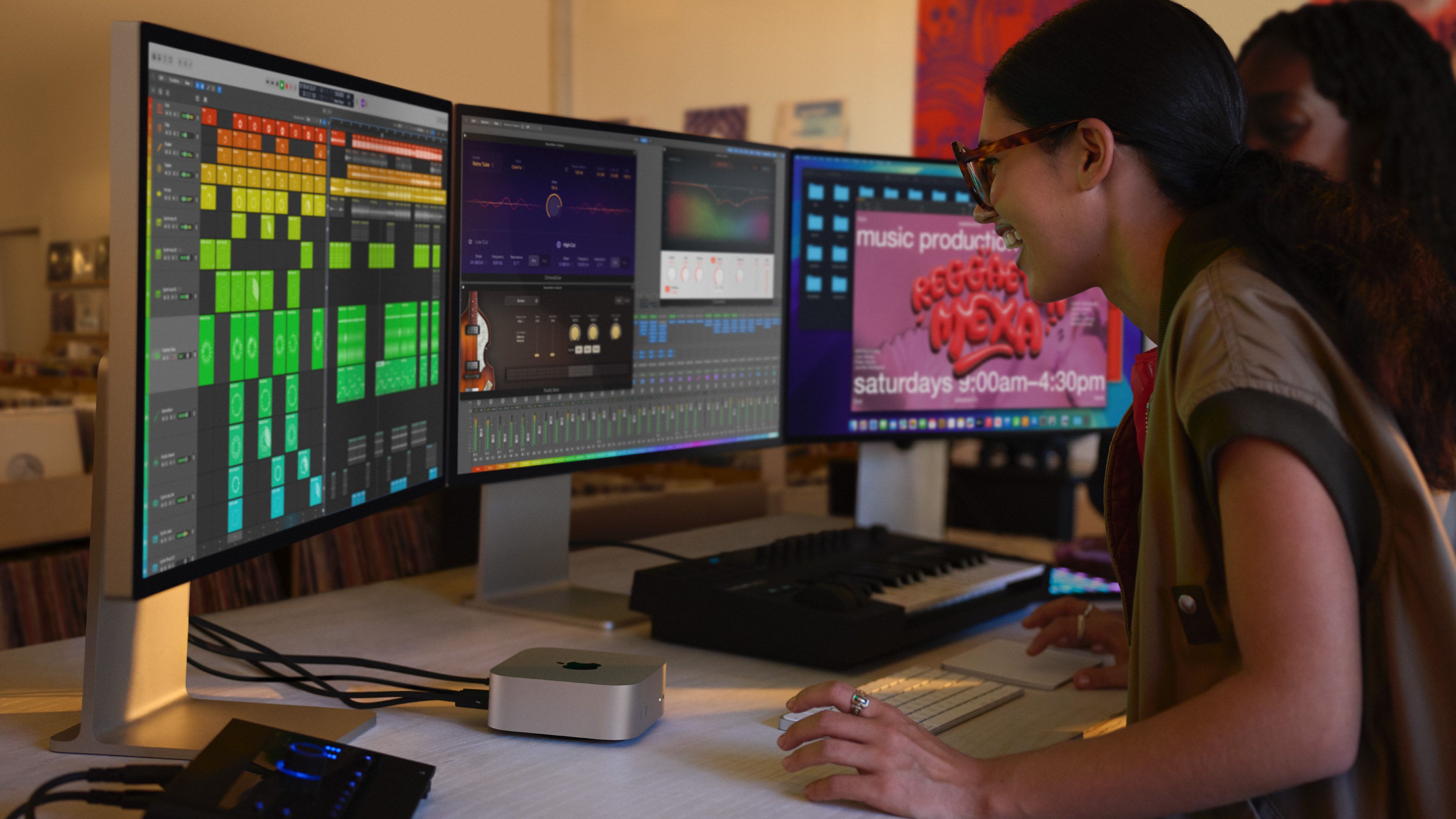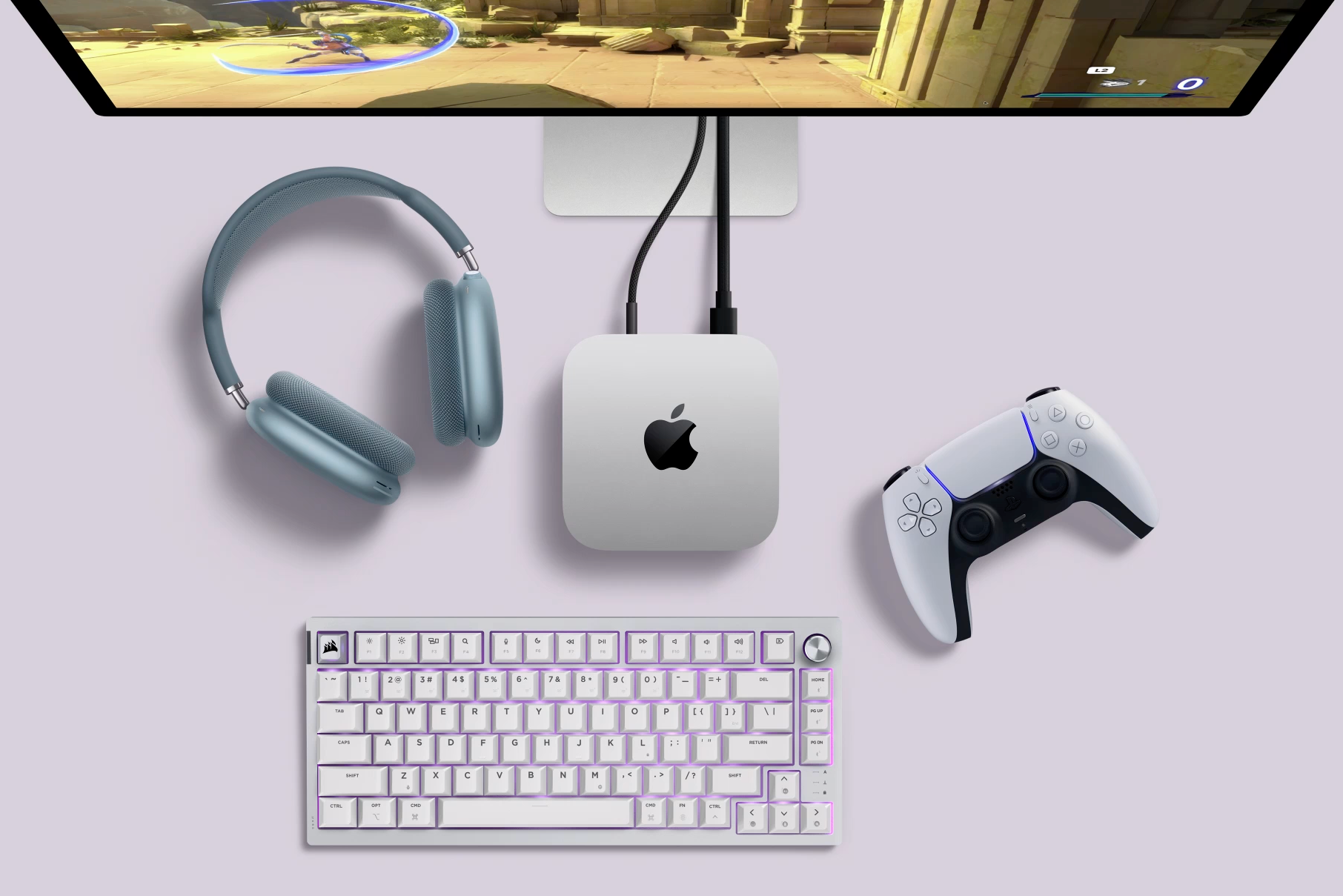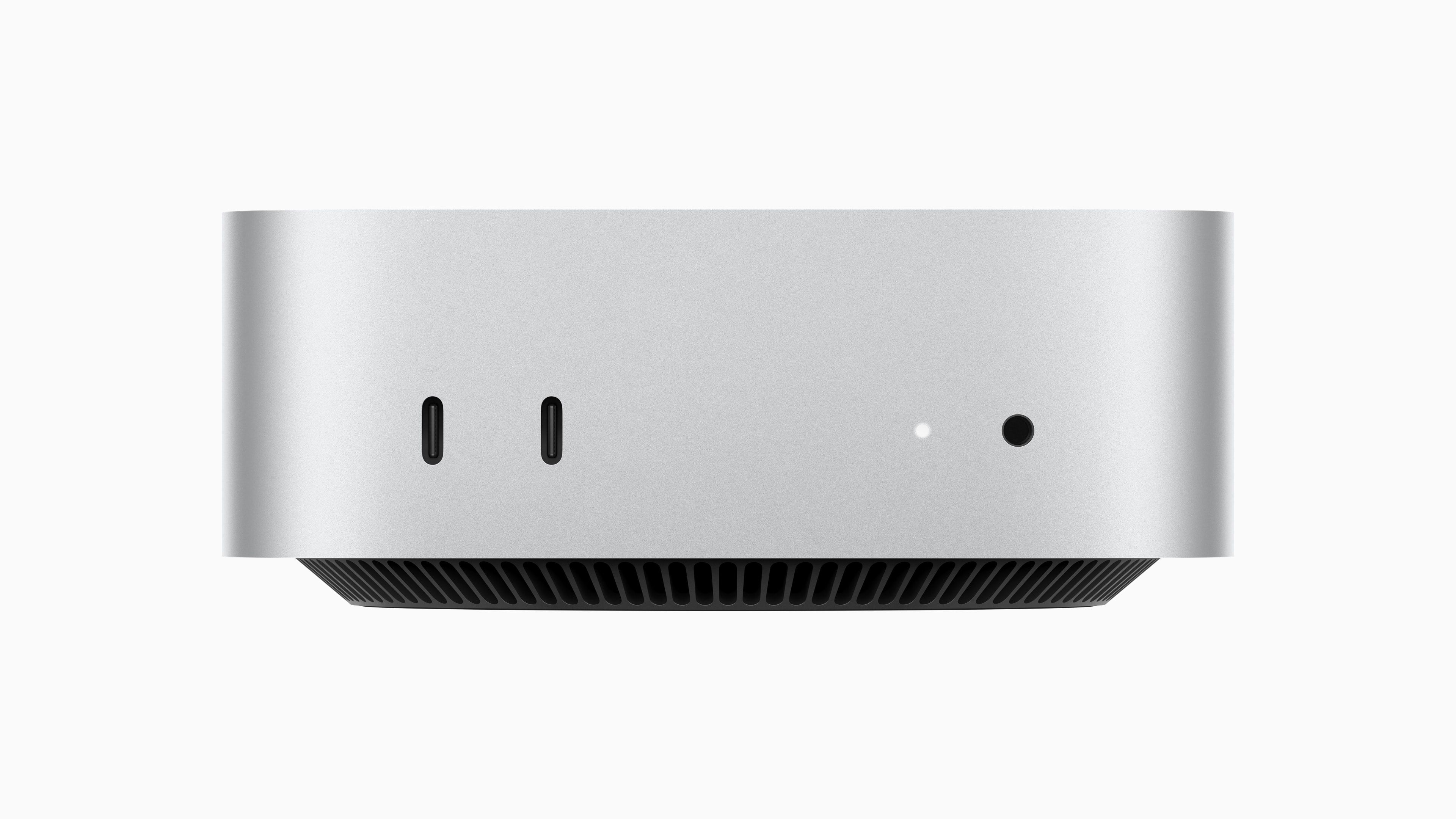Key Takeaways
- The Mac Mini is Apple’s best-value computer, starting at $599, half the price of an iMac.
- Apple’s smallest Mac is available with a more powerful chip, more storage, and increased compared to the iMac.
- The Mac Mini offers more flexibility in terms of displays and peripherals and can easily find a home as a server for media, files, or smart home purposes or as a media center and gaming machine.
The iMac is Apple’s flagship home computer, with everything you need in a ready-to-go colorful package. But it’s not the best choice for everyone, especially when the Mac Mini is such a compelling prospect.
The Mac Mini is Apple’s Best-Value Computer
Perhaps the best reason to consider the Mac Mini over an iMac is the price. At a starting price of $599, the Mac Mini is less than half the price of a comparably-specced iMac (which starts at $1,299).
Of course, there are some caveats to this. While the iMac comes with everything you need (including a display and peripherals), the Mac Mini is a computer in a box. You get the enclosure, a power cable, and nothing else. Whether or not the iMac comes with $700 worth of additional value is very much up for debate, and the answer will vary depending on who you ask.
This means that the Mac Mini is great for anyone who has everything they need to get started. It’s perfect for people who are looking to try out the switch to macOS without committing to a pricey all-in-one. And you’ve got even more options if you extend your search to the second-hand market.
Apple’s M4 Mac Mini offers best-in-class value for money, but if you’re willing to go for an older machine you can pick up an M2 or M1 Mac Mini and save a few hundred dollars. You’ll get all of the Apple silicon benefits like power and heat efficiency, compatibility with the latest version of macOS, and the M1 or better can even use Apple Intelligence.
More Power If You Need It
The 2024 iMac is available with an M4 processor, offering up to 10 CPU and GPU cores on the higher-end version. While this is certainly good enough for the average user, the Mac Mini can up the ante thanks to its (admittedly more expensive) M4 Pro option.
With an M4 Pro, the Mac Mini is available with 12 CPU cores and 16 GPU cores or you can upgrade at checkout to get 14 CPU cores and 20 GPU cores. These higher-specced M4 Pro models also come with 24GB of memory by default, up from 16GB on the base M4.
This is to say nothing of the other big upgrade that the M4 Pro Mac Mini has over the iMac: Thunderbolt 5. With the right peripherals, you can hit transfer speeds of 120Gb/s, up from 40Gb/s with Thunderbolt 4.
On top of this, the Mac Mini has more headroom for storage and RAM upgrades. You can choose to upgrade your Mac Mini with 8TB of storage (with a limit of 2TB on the iMac) and 64GB of RAM or what Apple calls “Unified memory” (limited to 32GB on the iMac).
These upgrades are perfect if you think you’ll need a bit more oomph for video editing, 3D rendering, or heavier workflows in areas like data analysis or running AI models locally. More storage is always a good thing if you can afford it. Be prepared to pay Apple money for these upgrades, though they remain competitive when compared across the lineup.
A beefed-up Mac Mini provides far better performance than an iMac ever could while avoiding the costs associated with opting for a Mac Studio or a MacBook Pro. The cherry on top is that the form factor remains small, even if you max everything out.
A Flexible Mac Setup
The Mac Mini offers great flexibility when compared with the iMac or MacBook range. For some, the lack of a display or Apple peripherals could be seen as a downside, while for others it’s an opportunity to save money or branch out.
Above all, it’s perfect for anyone looking to repurpose their old monitor or keyboard and mouse with a new computer. Unfortunately, Apple doesn’t make a cut-price monitor that’s perfect for the Mac Mini. If you want an Apple monitor, your best choice is the Apple Studio Display with its $1,599 price tag.
The good news is that your old monitor should work just fine with a Mac Mini, whether you’re using the HDMI 2.1 output, DisplayPort over USB-C, or Thunderbolt. Just be aware that macOS is designed for “Retina” pixel densities of 218 PPI or higher, so display scaling can negatively affect displays that fall short of this target.
You’ve got a few options if you want to hit Apple’s magical Retina target. The Samsung ViewFinity S9 is a 5K display much like Apple’s that can be had for around half the price of a Studio Display. Older LG UltraFine 27-inch 5K monitors can be found second-hand. There are new 27-inch 5K monitors coming from BenQ and ASUS too.
You’re also going to need a mouse and keyboard. We’d recommend giving the Magic Mouse a miss and opting for a Magic Trackpad or an alternative Mac-compatible mouse instead. In terms of keyboard, you could pick up one of Apple’s USB-C Magic Keyboards with or without Touch ID, or you could go for something radically different.
It’s telling that Apple’s promotional materials for the M4 Mac Mini include a few product shots with a mechanical keyboard. There are plenty of enthusiast keyboards designed to appeal Mac users like the NuPhy Air 75v2 and LoFree Flow, which are great antidotes to the Magic Keyboard if you’re looking for something with a bit more “body.”
The beauty here is that you aren’t stuck with whatever Apple gives you. You aren’t paying $700 more for a computer that’s grafted to a display (like the iMac) when all you need is the brains of the operation. You also aren’t wasting money on Apple accessories that you’ll never use if you’re already happy with your existing setup.
You’ll Get More Life Out of a Mac Mini
A Mac Mini won’t necessarily last longer than an iMac in terms of usage, since the hardware will age at the same rate. You’ll still want to upgrade in a few years when 16GB of RAM and the M4 chip start to feel slow and old.
Maybe Apple will introduce some revolutionary new feature that your Mac can’t use, or you just reach an end-of-life stage for macOS support. But the Mac Mini has a lot more potential as a repurposed machine compared to the iMac. Because the iMac is a giant display that houses a computer, it has to fit somewhere and be somewhat accessible.
That’s not the case with the Mac Mini. Apple’s headless wonder can spend its retirement happily powering a file server, streaming media around your house, or running a local smart home setup thanks to Home Assistant. You can leave it connected to the router in your office, or hide it in a cupboard and easily relocate it when you need to perform maintenance.
It’s also a solid choice if you’re looking for a media center computer, on which to run XBMC or similar. With an Apple Arcade subscription or Steam’s Big Picture mode, you can even use it to run modern games. Better yet, even an old outdated Mac Mini has enough power to function as an emulation machine (and Bluetooth means wireless support for Xbox, PlayStation, 8BitDo and more controllers).
You might also find that there’s a hotter second-hand market for an old Mac Mini since they’re sought-after small computers that are popular for all the reasons listed above. When it’s time to part ways, you probably won’t have to wait long before you’ll have some cash in your pocket to throw at your next upgrade.
Ultimately, there’s a time and a place for both the Mac Mini and iMac. For a simple home setup that comes with everything you need, the iMac is surprisingly good value.
But for anyone looking to go beyond Apple’s boundaries or make do with what they have and save some money, the Mac Mini is hard to beat.








